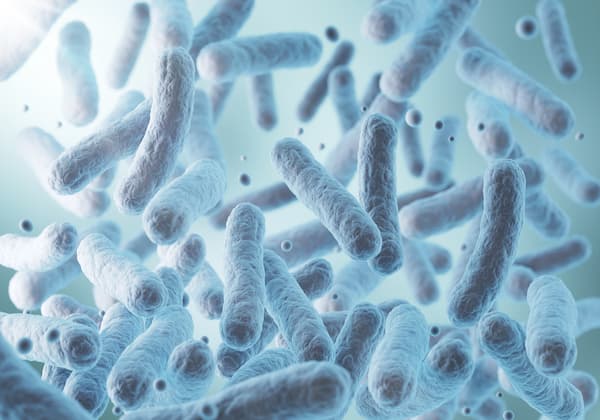Health Hazards of Smoking: The Complete Guide
Discover the serious health risks of smoking, its impact on your body, and why quitting is the best step for a healthier future.

Written by Dr. Dhankecha Mayank Dineshbhai
Reviewed by Dr. Siri Nallapu MBBS
Last updated on 28th Sep, 2025

Introduction
Smoking is often portrayed as a personal choice, but its consequences are a devastating public health crisis. While most people associate smoking with lung cancer, the reality is that this habit poses a threat to nearly every organ in the human body. From the moment smoke is inhaled, a cascade of over 7,000 chemicals begins to cause damage, leading to debilitating diseases, reduced quality of life, and premature death. Understanding the full scope of these health hazards of smoking is the first critical step toward making an informed decision for your well-being. This comprehensive guide will move beyond the well-known risks and delve into the systemic damage smoking causes, including its impact on your heart, reproductive system, and even your senses. We will also explore the dangers posed to others through secondhand smoke and, most importantly, highlight the profound benefits of quitting, demonstrating that your body has a remarkable capacity to heal. Whether you smoke, are considering quitting, or know someone who does, this article aims to provide the knowledge needed to confront this challenge head-on.
Beyond the Lungs: A Whole-Body Assault
It's a common misconception that smoking only harms the lungs. In truth, the toxic chemicals in cigarette smoke enter the bloodstream through the lungs and are then carried to every part of the body. This systemic distribution is what makes smoking so uniquely dangerous.
The Chemical Cocktail: What You're Really Inhaling
Each puff of a cigarette delivers a complex mixture of chemicals. While nicotine is the addictive agent that keeps people smoking, it's the other compounds that cause the most harm.
Tar: A sticky substance that coats the lungs, damaging the cilia (tiny hairs that clean the lungs) and leading to chronic bronchitis and emphysema.
Carbon Monoxide: This gas binds to red blood cells more easily than oxygen, reducing the amount of oxygen delivered to your organs and tissues. This puts a strain on your entire body, especially your heart.
Carcinogens: At least 70 of the chemicals in tobacco smoke are known to cause cancer. These substances can damage DNA and lead to uncontrolled cell growth.
This chemical assault is the root cause of the wide-ranging effects of smoking on the body.
Health topic carousel:
Doctor's speciality: General Physician
Text: Consult a General Physician for the best advice
Cancer: The Most Feared Consequence
Smoking is the number one risk factor for lung cancer, but its carcinogenic effects are not confined to the respiratory system. It is a leading cause of many other types of cancer.
Lung Cancer: The Leading Link
Smoking is responsible for about 80% to 90% of all lung cancer deaths. The risk is directly related to the number of cigarettes smoked and the duration of the habit. The risks of smoking cigarettes are starkly evident here: smokers are 15 to 30 times more likely to get lung cancer or die from it than non-smokers.
Cancers Beyond the Respiratory System
The bloodstream carries carcinogens throughout the body, which is why smokers are at a significantly higher risk for cancers of the:
Mouth, Throat, and Oesophagus
Bladder and Kidney
Pancreas
Cervix
Stomach
Acute Myeloid Leukaemia
This broad spectrum of diseases caused by smoking underscores that no part of the body is safe from its effects.
Cardiovascular Catastrophe: Smoking and Your Heart
Smoking is a major cause of cardiovascular disease (CVD), which includes heart attacks, strokes, and peripheral artery disease.
How Smoking Triggers Heart Disease and Stroke
The smoking and heart disease statistics are alarming. Smoking damages the lining of your arteries, leading to a buildup of fatty material (atherosclerosis) that narrows them. This reduces blood flow and can lead to:
Heart Attack: If an artery supplying blood to the heart becomes blocked.
Stroke: If an artery supplying blood to the brain becomes blocked or bursts.
Peripheral Artery Disease: Reduced blood flow to the limbs, which can cause pain and, in severe cases, gangrene.
Furthermore, the carbon monoxide and nicotine in smoke increase heart rate and blood pressure, forcing your heart to work harder. The chemicals also make blood sticky and more likely to clot, dramatically increasing the risk of a blockage.
Respiratory Ruin: From COPD to Emphysema
Chronic Obstructive Pulmonary Disease (COPD) is an umbrella term for progressive lung diseases that make it hard to breathe. Smoking is the primary cause of COPD.
The Progressive Nature of Chronic Obstructive Pulmonary Disease (COPD)
COPD develops slowly, and symptoms often don't appear until significant lung damage has occurred. The key conditions under COPD are:
Emphysema: The air sacs (alveoli) in the lungs are destroyed, reducing the surface area available for oxygen exchange.
Chronic Bronchitis: The lining of the airways is constantly inflamed and irritated, leading to a persistent, mucus-producing cough.
The hallmark smoking and COPD symptoms include shortness of breath (especially during physical activity), a chronic cough, wheezing, and frequent respiratory infections. There is no cure for COPD, but quitting smoking is the most effective way to slow its progression. If you experience a persistent cough or shortness of breath, consulting a doctor online with Apollo24|7 can help you get an initial evaluation.
The Impact on Reproductive Health and Fertility
Many are unaware of how significantly smoking can affect reproductive health. For both men and women, it can complicate the journey to parenthood.
For Men: Smoking can cause erectile dysfunction by damaging blood vessels. It can also reduce sperm count and motility and damage sperm DNA.
For Women: Smoking can make it more difficult to conceive by affecting hormone levels and damaging reproductive organs. It also increases the risk of ectopic pregnancy, premature birth, stillbirth, and low birth weight. The question of does smoking affect fertility has a clear and resounding answer: yes, significantly.
Other Serious Health Conditions Linked to Smoking
The list of health hazards of smoking is extensive, including conditions that affect daily life.
Type 2 Diabetes and Weakened Immunity
Smokers have a 30-40% higher risk of developing type 2 diabetes. It also makes it harder to control diabetes once diagnosed. Furthermore, smoking weakens the immune system, making you more susceptible to infections like pneumonia and influenza.
Vision Loss and Dental Deterioration
Smoking increases the risk of major eye diseases like cataracts and age-related macular degeneration (AMD), which can lead to blindness. It also causes gum disease, tooth loss, and oral cancers.
The Dangers of Secondhand and Thirdhand Smoke
The risks aren't limited to the smoker. Secondhand smoke exposes non-smokers to the same dangerous chemicals, increasing their risk of lung cancer, heart disease, and stroke. For children, it can cause sudden infant death syndrome (SIDS), respiratory infections, and ear infections. Thirdhand smoke, the residue left on surfaces, is also an emerging health concern, especially for young children who touch contaminated surfaces.
The Benefits of Quitting: It's Never Too Late
The good news is that the body begins to repair itself almost immediately after quitting. The benefits of quitting smoking timeline is a powerful motivator.
A Timeline of Recovery After You Quit Smoking
20 Minutes: Heart rate and blood pressure drop.
12 Hours: Carbon monoxide level in your blood drops to normal.
2 Weeks to 3 Months: Circulation improves; lung function increases.
1 to 9 Months: Coughing and shortness of breath decrease.
1 Year: Risk of coronary heart disease is half that of a smoker's.
5 Years: Risk of cancers of the mouth, throat, and bladder is cut in half.
10 Years: Risk of lung cancer drops to about half that of a smoker.
15 Years: Risk of coronary heart disease is that of a non-smoker's.
This timeline shows that it's never too late to quit and start how to reverse damage from smoking.
Conclusion
The evidence is overwhelming: smoking is one of the most significant threats to human health. The health hazards of smoking are pervasive, causing preventable suffering and death on a global scale. However, this guide is not meant to instill fear, but to empower with knowledge. Quitting smoking is the single best thing you can do for your health. The journey can be challenging, but the rewards are immeasurable: more energy, a longer life, and freedom from addiction. If you are ready to take that step, remember you don't have to do it alone. Seek support from healthcare professionals, quitlines, and support groups.
Frequently Asked Questions (FAQs)
Below are the FAQs:
1. How long does it take for your lungs to heal after quitting smoking?
A. While lung function can improve significantly within the first few months, the timeline for full healing varies. The cilia in your lungs begin to regenerate within 3 months, helping to clear mucus and reduce infection risk. However, healing from conditions like emphysema is a longer process, and some damage may be permanent. The key benefit is that quitting stops the progressive damage immediately.
2. Is vaping a safer alternative to smoking cigarettes?
A. While e-cigarettes expose users to fewer toxic chemicals than combustible cigarettes, they are not safe. The aerosol from vaping contains nicotine (which is addictive), ultrafine particles, and other chemicals linked to lung disease and cardiovascular problems. The long-term health effects of vaping are still being studied, but they are not a risk-free alternative.
3. What is the link between smoking and mental health conditions like anxiety?
A. Many people smoke to relieve stress, but nicotine actually increases anxiety and tension over time. The relief felt is from satisfying the nicotine craving. Quitting smoking can improve mental health and well-being, though the initial withdrawal period can be challenging.
4. Can light or social smoking still cause health hazards?
A. Yes. There is no safe level of smoking. Even light or occasional smoking can damage blood vessels, increase the risk of heart disease, and cause premature ageing. The harmful effects are cumulative, meaning every cigarette contributes to the overall risk.
5. How can I help a loved one quit smoking?
A. Offer encouragement and patience, not judgment. Let them know you're there for them. Encourage them to talk to a doctor about cessation aids like patches, gum, or prescription medication. You can also suggest they call a quitline for support. Avoid nagging, as it can create resistance.
Health topic carousel:
Doctor's speciality: General Physician
Text: Consult a General Physician for the best advice



_0.webp)
